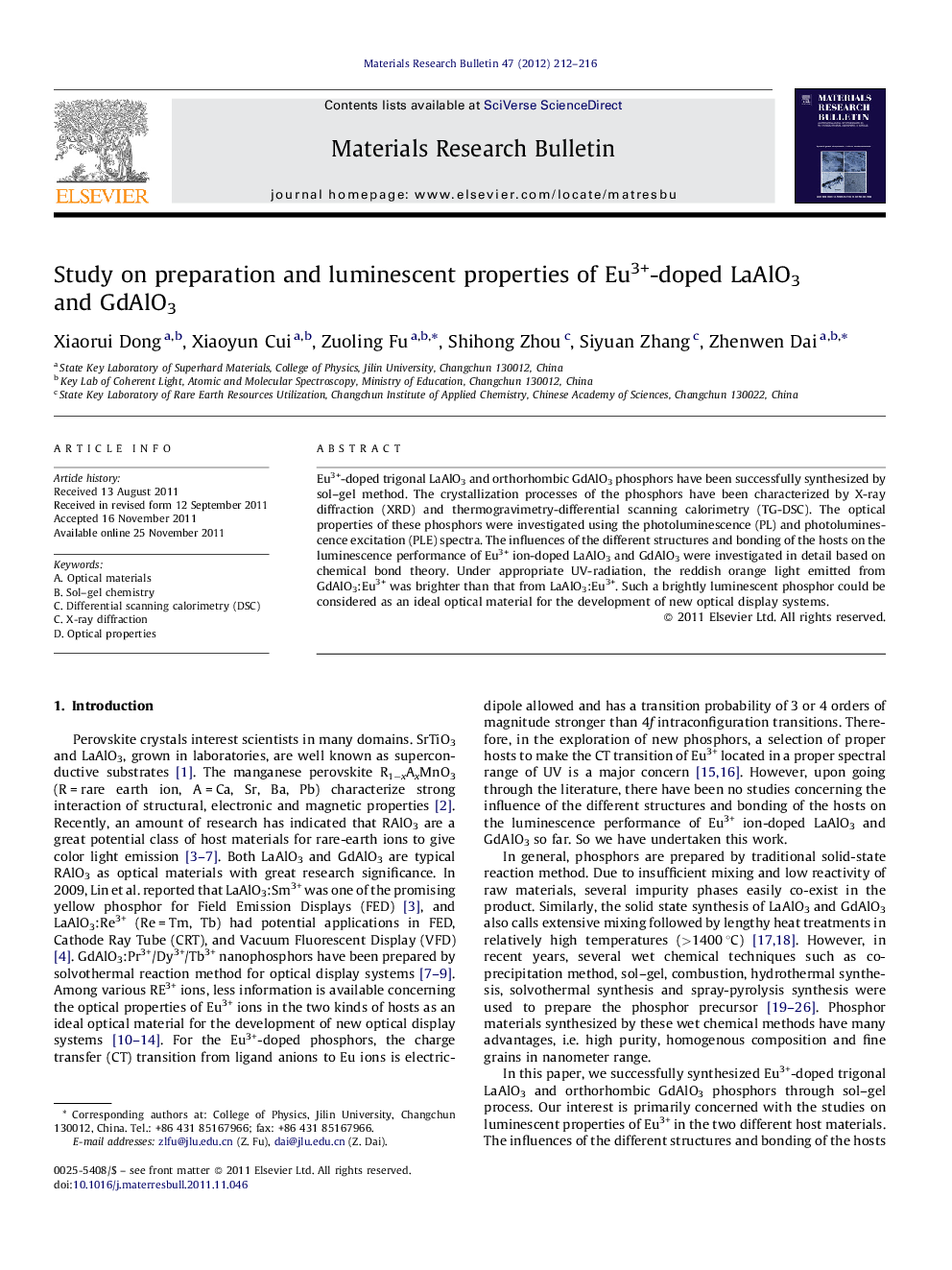| Article ID | Journal | Published Year | Pages | File Type |
|---|---|---|---|---|
| 1490609 | Materials Research Bulletin | 2012 | 5 Pages |
Eu3+-doped trigonal LaAlO3 and orthorhombic GdAlO3 phosphors have been successfully synthesized by sol–gel method. The crystallization processes of the phosphors have been characterized by X-ray diffraction (XRD) and thermogravimetry-differential scanning calorimetry (TG-DSC). The optical properties of these phosphors were investigated using the photoluminescence (PL) and photoluminescence excitation (PLE) spectra. The influences of the different structures and bonding of the hosts on the luminescence performance of Eu3+ ion-doped LaAlO3 and GdAlO3 were investigated in detail based on chemical bond theory. Under appropriate UV-radiation, the reddish orange light emitted from GdAlO3:Eu3+ was brighter than that from LaAlO3:Eu3+. Such a brightly luminescent phosphor could be considered as an ideal optical material for the development of new optical display systems.
Graphical abstractThe optical property of Eu3+ ions is seriously influenced by the two kinds of host materials of LaAlO3 and GdAlO3, especially the charge transfer (CT) band energy of Eu3+–O2−. We have discussed it in detail based on experiments and quantitative calculations.Figure optionsDownload full-size imageDownload as PowerPoint slideHighlights► Ln1−xAlO3:Eux3+ (Ln = La, Gd) phosphors were prepared by sol–gel method. ► The optical properties of Ln1−xAlO3:Eux3+ (Ln = La, Gd) phosphors have been investigated in detail. ► We quantitatively calculated the bond lengths and bond covalency of Gd–O and La–O bonds. ► The calculated charge transfer energies of Eu3+-doped LnAlO3 (Ln = La, Gd) are in good agreement with our experimental results.
